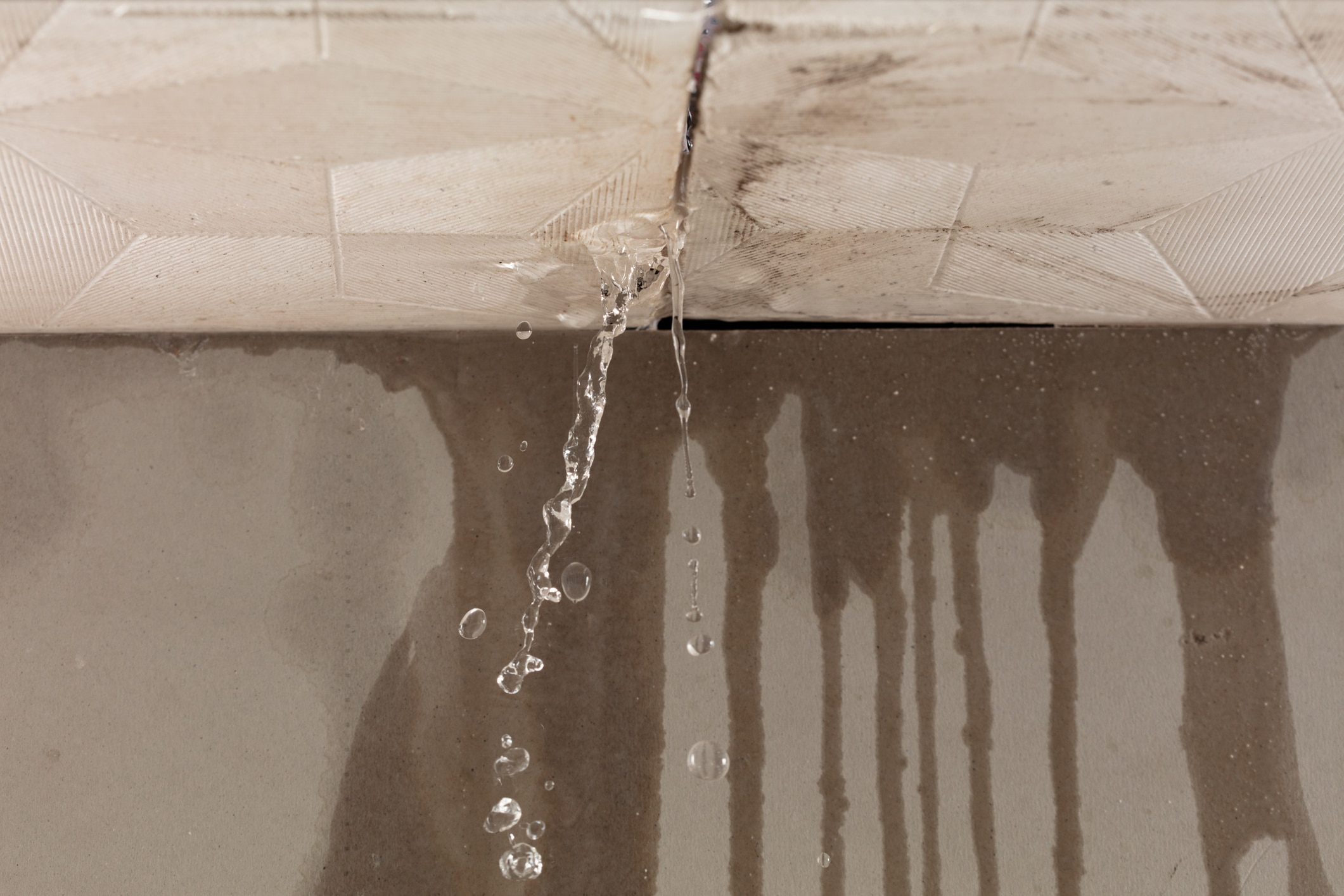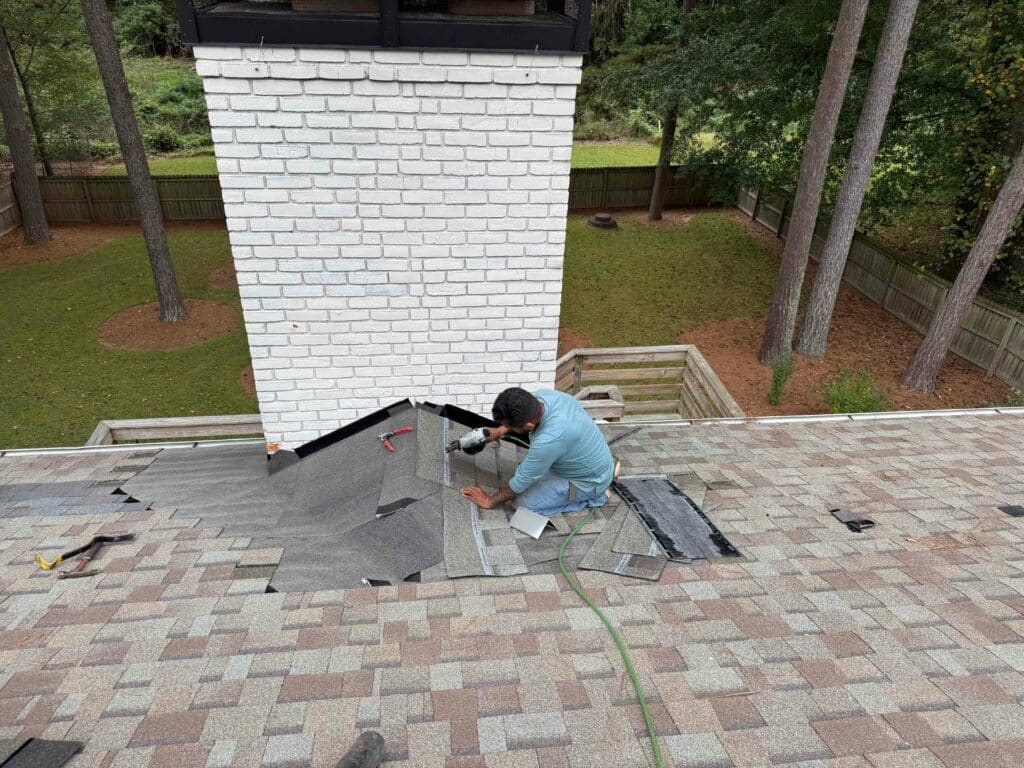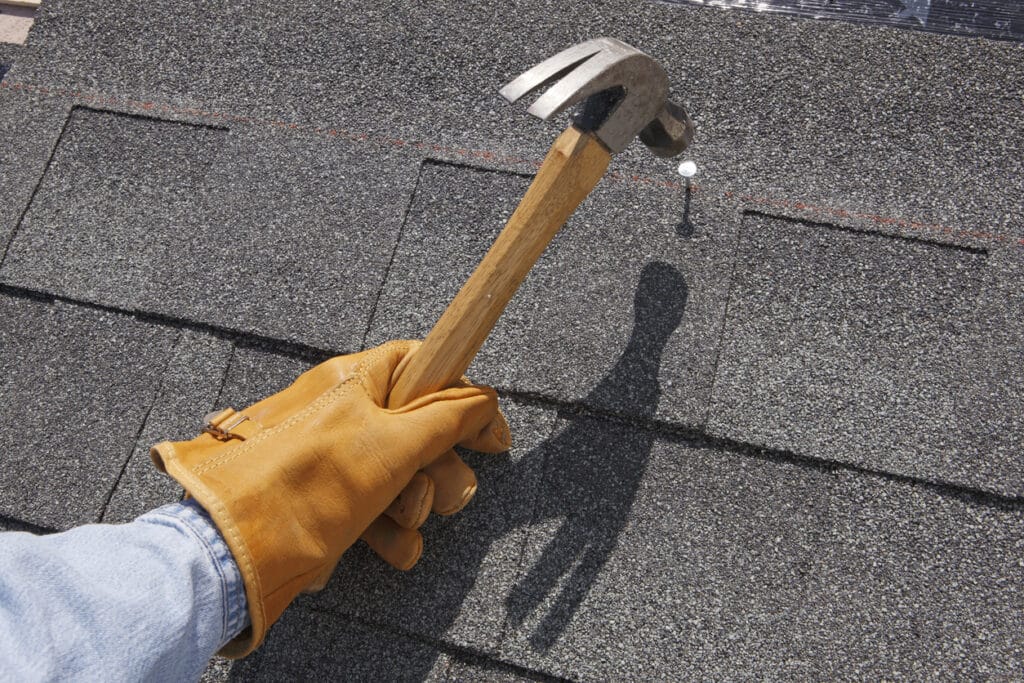
Nothing ruins a perfect rainy day in Atlanta like discovering a new, ominous water stain on your ceiling. That sinking feeling is universal. You immediately start worrying about buckets, mold, drywall damage, and what this is going to cost.
The frustrating part is that most leaks don’t start from a single, dramatic event like a tree falling on your house. They’re often the result of small, hidden issues that have been quietly getting worse over time.
Understanding the common causes of roof leaks is the absolute best way to prevent a minor drip from becoming a major home repair disaster.
As Atlanta’s go-to roofing experts, we’ve seen it all. We get the calls every day, and the culprits are almost always the same. Let’s pull back the shingles on the “usual suspects” we find time and time again.
What Is the Most Common Cause of Roof Leaks?

If you had to bet on what the most common cause of roof leaks is, you should put all your money on one thing: failed flashing.
Flashing is the system of metal or rubber installed at any joint, seam, or penetration on your roof. Its only job is to direct water away from an area where it could otherwise seep in.
The two biggest culprits we find in this category are:
- General Flashing: The metal strips around chimneys, skylights, dormer walls, and in the valleys where two roof slopes meet.
- Pipe Boots (or Pipe Flashing): The protective boot, often made of rubber or plastic, that seals around the base of your plumbing vent pipes.
Here in Atlanta, our climate is a perfect storm for accelerating wear and tear. The intense summer sun and UV rays bake the rubber seals on pipe boots, causing them to become brittle and crack.
Then, our heavy rainstorms and high humidity go to work, attacking the metal edges and wearing away at old sealant. This constant cycle of hot-and-humid followed by a downpour is what turns a tiny, invisible crack into a full-blown ceiling stain.
The Most Common Places for Roof Leaks
Based on the thousands of leak repairs we’ve handled in Atlanta, these are the common places for roof leaks we check first.
Chimneys
A brick chimney is one of the most complex features on a roof, giving water four distinct ways to get in. Here’s a quick summary of what typically causes common roof leaks around chimneys:
Issue | How It Leads to Leaks |
Missing or cracked chimney caps | Allows rainwater to fall directly into the flue and seep into surrounding materials. |
Damaged chimney flashing | Creates gaps where the roof meets the brick, letting water run behind the shingles. |
Deteriorating mortar or brick | Porous, crumbling masonry absorbs water and leaks during storms. |
Condensation in old chimney liners | Moisture accumulates inside the flue and seeps into nearby rafters and drywall. |
You’ll typically see dark, discolored water stains on the ceiling or walls around the fireplace. You might also notice a damp, musty smell in that room, especially after a heavy rain.
Roof Valleys and Dead Valleys
A valley is where any two sloping roof planes meet. A dead valley is an area, often formed by a dormer or a change in roof pitch, where water can get in but has no easy way out.
These areas are leak magnets for two main reasons:
- Debris Buildup: Leaves, pine straw, and shingle granules all collect here, acting like a dam.
- Water Stagnation: The dam holds water against the shingles and flashing, giving it all the time in the world to find a tiny pinhole to seep into. Trapped moisture is the enemy of every roof.
Flashing Joints

Flashing is the thin metal installed at roof seams, edges, and penetrations to keep water from slipping under the shingles.
Typical flashing failure causes:
- Corrosion or age, especially on older galvanized metal
- Improper installation or weak sealing that lifts during storms
- Foundation or structural movement creates small separation gaps
Around Pipe Boots
A pipe boot is the rubber or silicone seal that wraps around plumbing vent pipes to create a watertight barrier. These are among the most common roof leaks because they face constant sun exposure and move with temperature changes.
Common pipe boot leak causes:
- Cracked or weathered rubber from UV exposure
- Corroded nails or rusted metal gaskets
- Improper installation or low-quality boot materials
- Thermal expansion and contraction causing gaps around the vent
When pipe boots fail, water travels straight down the pipe into the attic, one of the simplest but most overlooked common causes of roof leaks.
Improperly Installed Residential Flat Roofs
Flat roofs (or low-slope roofs) are very common on modern home additions, porches, and townhomes in the Atlanta area. They are notoriously prone to leaking if not installed with absolute precision.
Unlike a sloped roof that uses gravity to shed water instantly, a flat roof must manage water. The most common causes of flat roof leaks include:
- Ponding Water: The roof doesn’t have a proper, slight slope to the drains, allowing water to stand in “ponds” that eventually soak through.
- Separated Seams: On “membrane” or “roll roofing,” the glued or heat-welded seams are the primary weak point and can peel apart over time.
- Debris: Just like in a dead valley, a few leaves can clog a drain or scupper, backing up water across the entire roof surface.
This is also a huge issue for common RV roof leaks, which are essentially small-scale flat roofs that are constantly twisting and flexing on the road, putting extra stress on every single seam and sealant.
Areas With Roof Pitch Changes
Roof pitch change leaks occur where two roof sections with different slopes meet. These transitions are natural stress points for shingles, underlayment, and flashing. Water doesn’t always flow smoothly at these intersections. It can either pool or rush faster than expected, which puts extra pressure on the roofing materials.
Why these areas leak:
- Uneven water flow causes shingles to lift or underlayment to tear.
- Flashing must be carefully installed to handle water redirected from steeper sections.
- Multiple rooflines increase the number of transitions, multiplying risk points.
Proper underlayment, quality flashing, and precise installation are critical to preventing leaks in these areas.
Improperly Driven Nails

Nails may seem small, but their placement makes a big difference in roof longevity. Improperly driven nails, such as those angled incorrectly, overdriven, or underdriven, can puncture shingles or loosen over time, becoming a subtle but common source of leaks.
Common nail issues:
- Nail Pops: Nails pushed out by wood expansion and heat changes, leaving holes in the shingles.
- Shingle Damage: Overdriven nails tear the shingle, creating direct water entry points.
- Loose Fasteners: Nails not properly seated allow shingles to shift during storms.
In Atlanta, temperature fluctuations and the natural expansion and contraction of roof decking make nail pops a frequent repair call. These seemingly minor defects are actually among the most common causes of roof leaks because water eventually finds the weak spots and seeps inside.
Together, areas with roof pitch changes and improperly driven nails highlight why attention to detail during installation can prevent the majority of common roof leaks before they even start.
Conclusion
Understanding the common causes of roof leaks in Atlanta gives homeowners the upper hand: you can spot early warning signs, schedule timely repairs, and protect your home from costly water damage.
Preventing leaks starts with quality installation, regular inspections, and addressing minor issues before they escalate. Whether it’s a residential roof, flat roof, or RV roof, the principles remain the same: proper materials, precise workmanship, and attention to detail.
If you’re concerned about potential leaks or want a professional inspection, Mr. Roofer’s team in Atlanta is ready to help. Our experts identify problem areas, recommend targeted solutions, and ensure your roof stays watertight through every storm.
Protect your home today and schedule a roof inspection with Mr. Roofer to stop leaks before they start.
